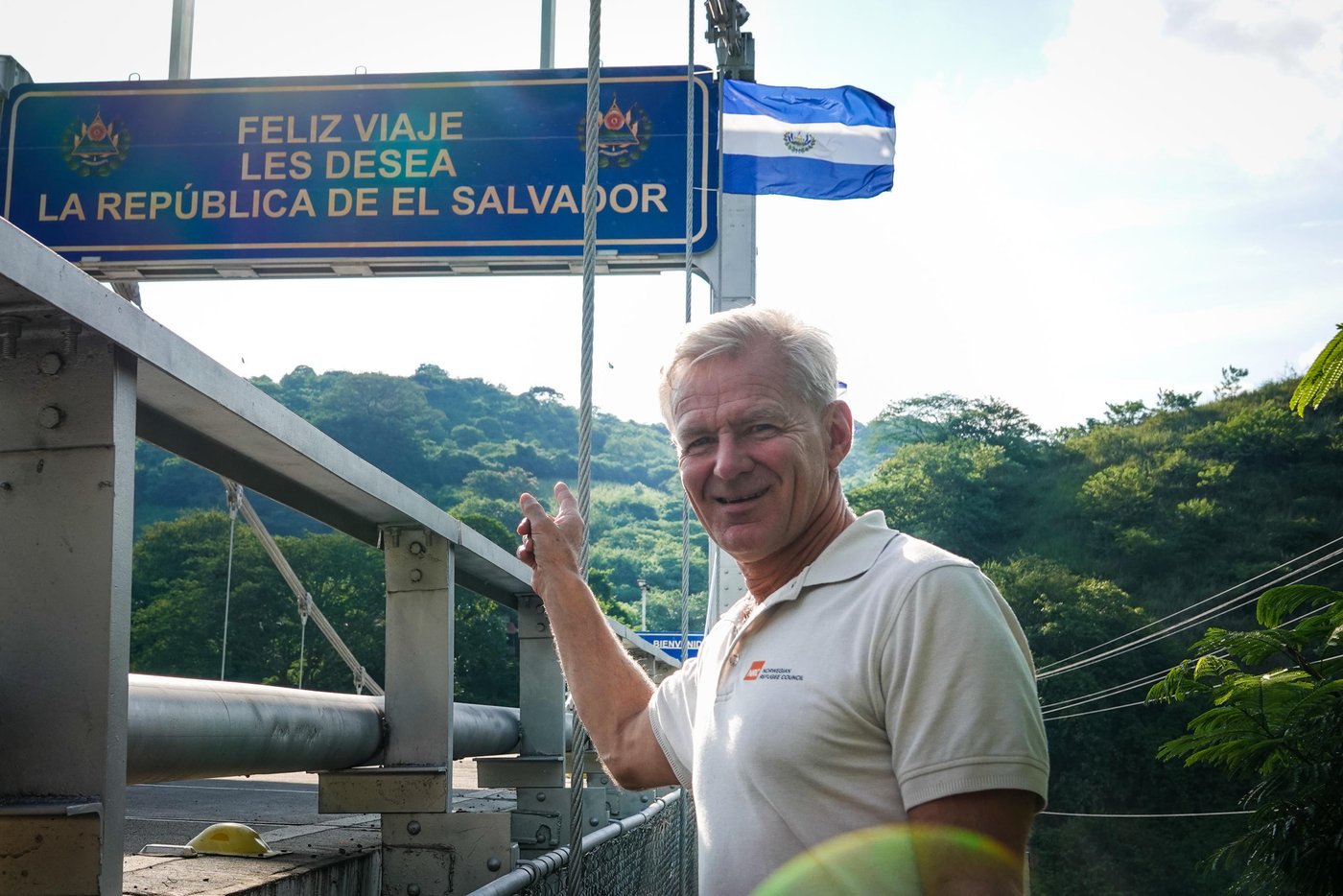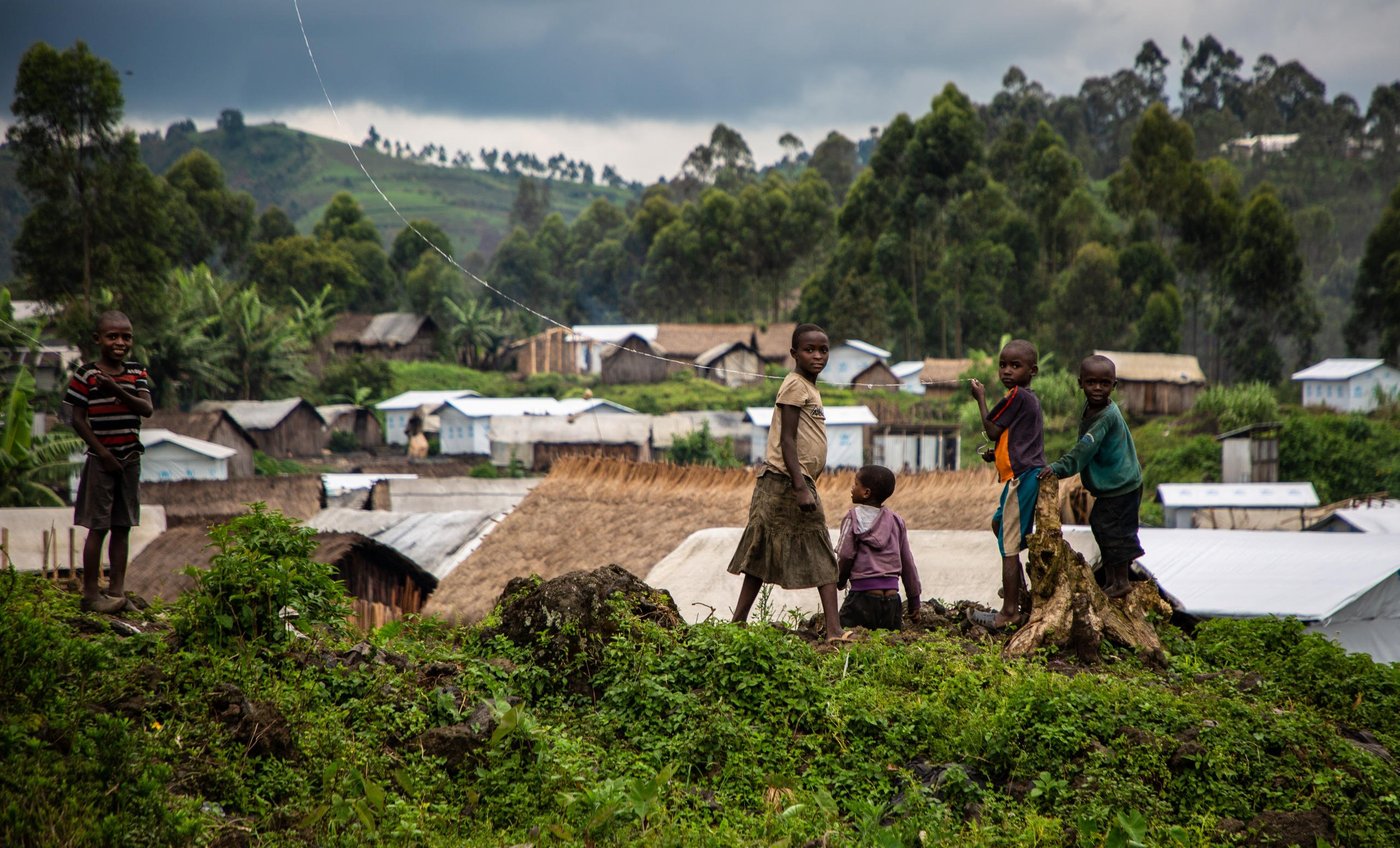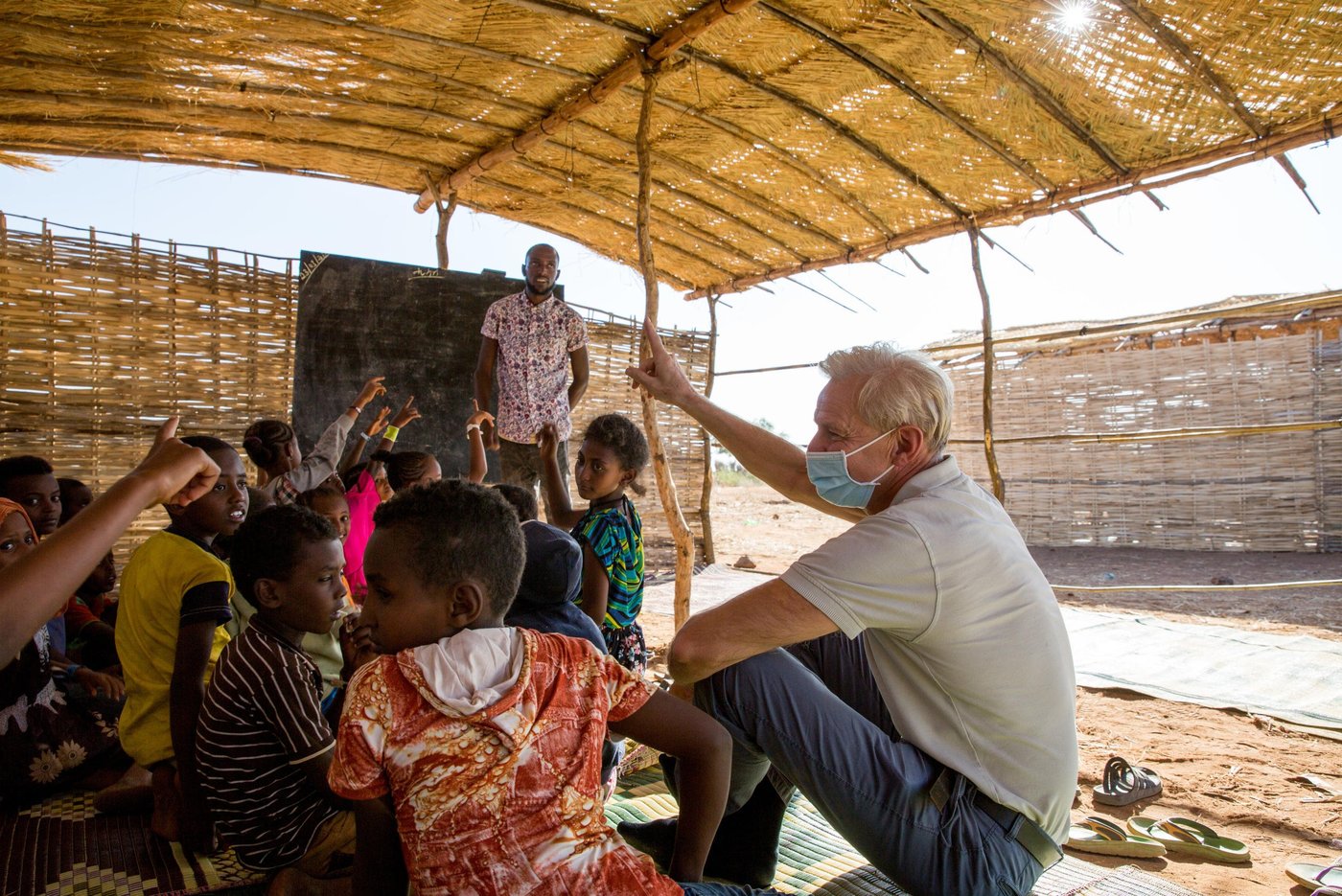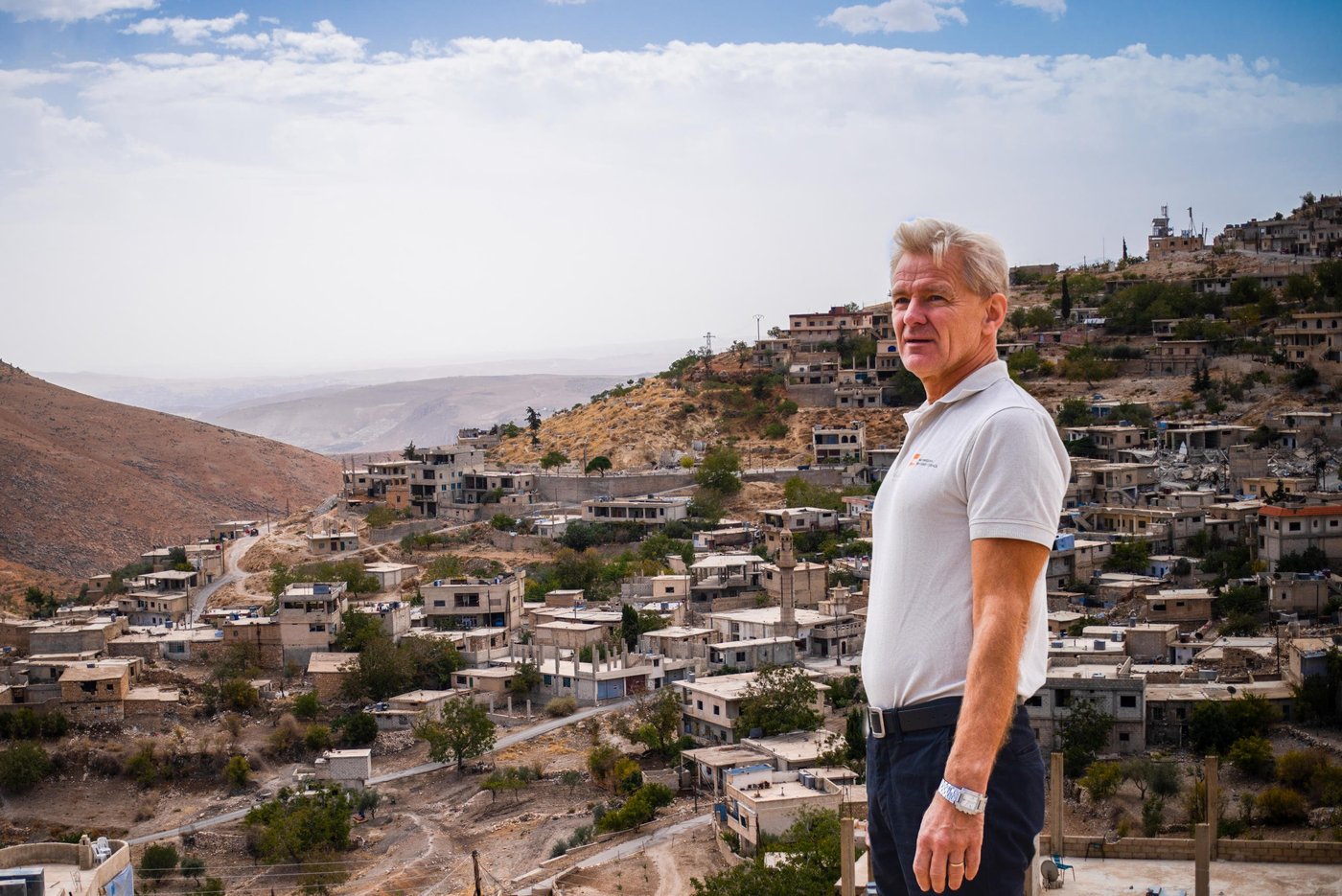A veteran of Amnesty International, the Red Cross and the UN, Egeland has served as NRC’s Secretary General since 2013. During this time, he has seen NRC grow from a medium-sized Norwegian organisation to a large and truly international aid agency.
As NRC prepares to celebrate its 75th anniversary, Egeland shares his thoughts on “herring aid”, what keeps him awake at night, and why we should be hopeful about solving the current refugee crisis.
NRC works to support refugees and displaced people in over 30 countries around the world. Support our work today
***
What first inspired you to become a humanitarian?
Well, I grew up in a middle-class home in Stavanger, Norway, and saw – felt – was taught by my parents – that I lived in one of the most privileged corners of the planet. And from the start I was taken by the idea that we Norwegians should show practical international compassion and solidarity.
I was very much engaged with some of the struggles of the time, such as the Vietnam War. And then, little by little I was drawn into Latin America and the struggle for democracy, human rights and freedom for people living under military dictatorships at the time.

Three months after I graduated from high school, I went on my own to Colombia to work for a Catholic relief organisation. And ever since then, I have been taken by this struggle for the most unfortunate, the most vulnerable, those who need our solidarity to fulfil their potential. The underprivileged.
So, humanitarian work became very natural for me later on. I worked for the Red Cross, I worked for the United Nations, the Norwegian Ministry of Foreign Affairs, and I found a home at last with the Norwegian Refugee Council (NRC).
We’re not there to talk to each other, organise seminars and look good, we’re there to help people in great need.
And for me it has been a perfect match, because NRC is the organisation I know where the distance between the wish to provide aid and the actual action is the closest. What we say is what we do.
What are you most proud of as head of NRC?
When we do “stakeholder reviews”, where we ask partners and donors and communities to describe us, they say that we are a very principled organisation. We live by the principles of humanity, neutrality, impartiality and independence. We are very outspoken on behalf of, and with, communities that are being trampled upon, whether that is now in Tigray, or in Syria during the bombing there, or in Central America where armed gangs are on the rampage.
Plus, we are an organisation that is action oriented. I frequently say to colleagues: we have to live by the “Kivu test”: what we do has to bring improvements for people (for example) in the conflict-ravaged Kivu regions of DR Congo. If it doesn’t help people in Kivu, let’s not do it! We’re not there to talk to each other, organise seminars and look good, we’re there to help people in great need.
NRC works to support refugees and displaced people in over 30 countries around the world. Support our work today

This is a thread back to our beginnings: 1946 in Europe, exactly one year after the end of the Second World War. Norway is not even close to being rebuilt. Finnmark, the northernmost region of the country, has been torched to the ground by the Germans. The country is in desperate need of Marshall Aid, which we get. And still, there is this great impulse among the Norwegian population to help refugees in Europe.
And under the banner “Europa sulter” (“Europe is starving”), the Norwegian Red Cross and Norwegian People’s Aid initiate a fundraising drive for Polish people, Germans, Austrians – including the Germans who once occupied us – because they were starving more than we were.
In 1946, for a very poor Norwegian population to try to feed Europe was a pretty ambitious goal
So, there is a thread which began with the impulse of a poor post-war community to help those who were worse off. And this impulse we have nurtured ever since.
Looking back at the organisation that was founded in 1946, what parallels do you see between that organisation and the one that you lead today? And what are the differences?
I think the uninterrupted link is this “can-do” attitude. In 1946, for a very poor Norwegian population to try to feed Europe, a hundred times our size and population, was a pretty ambitious goal. And we still have this feeling that, in many of the places where we go, we want to not only be noticed by the people there, we want to make a real difference with and for them. So, the can-do culture is really the common thread.

The main difference is that, although those early efforts were admirably well-meaning and idealistic, the quality of the aid was often not that good. The idea was to transport Norwegian food and clothes, herring or whatever it was, from Norway to the people in need. Nobody asked the people whether they wanted herring or any of the other products. Nobody did very sophisticated needs analysis, or monitoring, or evaluation.
So, this vast quantitative and qualitative improvement is of course the biggest difference. For many years there was, we must admit, an attitude of “let’s go and save people” and not necessarily ask them what they really need us to do, what they want us to do with them. That’s the biggest difference, really.
What do you see as NRC’s biggest achievement?
Well, there were a number of organisations that were founded between the 1930s and the 1950s, and we were among those. This was the period when the whole concept of international assistance came about. The biggest distinguishing factor with us is that we went from being a small-to-medium-sized Norwegian organisation to become, today, one of the largest humanitarian organisations in the world.
NRC works to support refugees and displaced people in over 30 countries around the world. Support our work today

We have seven and a half decades of history, and as much – if not more – has happened in the last decade as in the previous six and a half. Meaning that we have now more than 15,000 humanitarian workers in an organisation that a decade ago had fewer than 1,000. We reach, aid and protect more than ten million displaced people, again nearly tenfold the number we reached a decade ago.
Nowadays, we only work internationally. We’re still a Norwegian association, but we do not receive refugees in this country anymore and the vast majority of our staff are not Norwegians, nor are they based here.
Our number one challenge is all the people in great need that we are still not reaching
What are the most critical challenges facing NRC right now?
There is a whole host of organisational challenges as we want to be even more participatory, even more diverse, even more efficient. But I hope and pray we will still be able to recognise that our number one challenge is all the people in great need that we are still not reaching.
What keeps me up at night is not the last internal audit, it is the last report that, for example, we are still being kept out of Tigray, Ethiopia, where before the most recent war we helped tens of thousands of Eritrean refugees. That we’re still out of reach of large communities in need in Yemen, in Syria, in DR Congo, in Venezuela.
So, our greatest failing is that far too many people suffer alone and we’re not there to help them in their hour of greatest need. And that is why we still need to grow, because we have so many more people we should be caring for and serving.

Why should people care about humanitarian crises when nothing ever appears to change? How can we show that positive change is possible?
It’s a great challenge for us to get out all the success stories that we see, we feel, we hear, we smell in the areas where we operate. We succeed more often than we fail – where and when we have the resources to help.
It comes back to this: if our parents and grandparents felt the need to help the more destitute people in Central Europe from what was poor Norway in 1946, we today, who are so much more affluent, can do much more. If they could afford to help in 1946, we surely can do ten times more today.
There is no better investment for public and private money than to help people who are displaced and have lost everything
And it’s not just in keeping with our ideals and impulses – it’s also in keeping with our interests. Do we want our children or ourselves to live in a world with this kind of injustice, this kind of suffering, this kind of hunger and violence? I think not. Because it would mean a tremendously unstable world, with pandemics and uncontrolled movement of people.
We must succeed in explaining to people that there is no better investment for public and private money than to help people who are displaced and have lost everything – help them not just to survive, but to come back as productive members of a safe and stable community.
NRC works to support refugees and displaced people in over 30 countries around the world. Support our work today

Nevertheless, it seems that every year, the number of people displaced around the world goes up and up. Do you see an end to the refugee crisis, and what will it take to get us there?
I do see an end to it. I’m old enough to remember the Cold War, which was a very bleak period up until 1989. Then all of the optimism of the early 1990s. And all of the ups and the downs since then, with genocides in Rwanda and the Balkans as the bleakest moments. Now we’re again in a uniquely challenging period. There is little international cooperation, there is more conflict, and there is a growing threat from climate change and natural disasters.
I’m an optimist and I think that people, countries, societies, leaderships will see the importance of working together and helping each other
This can and will change. I’m an optimist and I think that people, countries, societies, leaderships will see the importance of working together and helping each other. One of the things that gives me optimism is how effective international relief and humanitarian work has become. It is amazing.
I was recently in Sudan, where NRC was thrown out by the dictator al-Bashir in 2009. We were invited back, and within months we were able to help tens of thousands of people. I saw my colleagues set up a school in seven days for hundreds of refugee children from Tigray, with local Tigrayan refugee teachers. To see the smiles and the singing and the education really gave me a sense of hope.
We can do this, yes we can. We can bring hope where there was none.

How does NRC being 75 years old make you feel?
Proud and hopeful. Proud because we have come long way. It’s remarkable what the organisation has achieved, and the vote of confidence that it has today: NRC receives funding from more than 40 countries and international institutions, and tens of thousands of private sponsors in Norway, Sweden and elsewhere.
And then I’m hopeful that we will be able to continue to stay and deliver aid, protection and hope in the most challenging places on the planet – places where very few others are able to stay and where there is too little support from the international community.
Finally, what is your message to NRC’s supporters?
A very warm “thank you” to all those who now give us a contribution every single month or support us in other ways. Those who help us build schools, bring education and hope, provide livelihoods, food and shelter, where there is only hopelessness today.
Please stay with us, because there is a lot more that we need to achieve – and a lot more people in situations of violence and disaster, including children and youth, who need a reason to hope.


